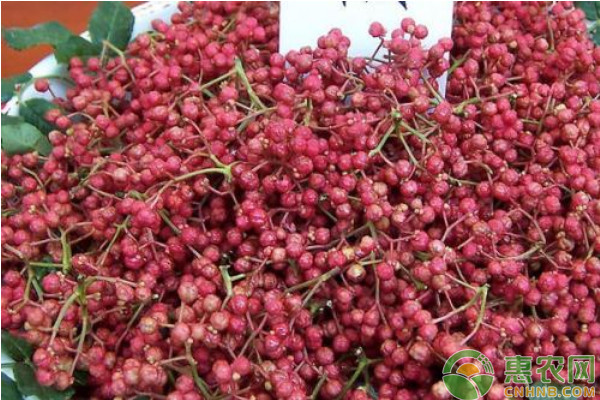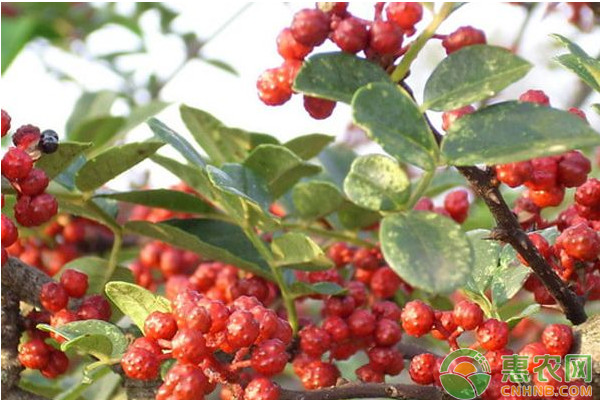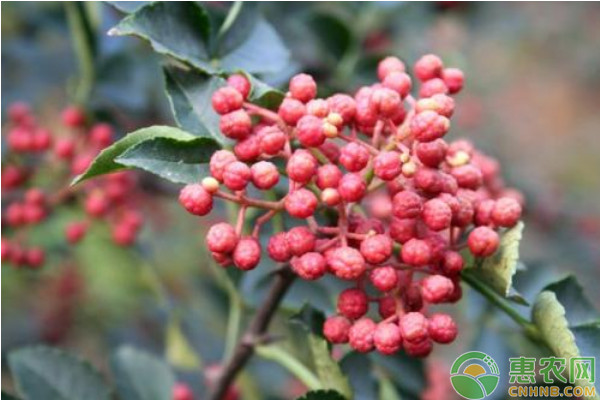In the production of pepper, it is often affected by a variety of pests and diseases, resulting in a decline in the yield and quality of pepper. In order to effectively control the pests and diseases of pepper, the following mainly introduces the prevention and control methods of common pests and diseases of pepper, for reference in production.

1 Common diseases of pepper
1.1 pepper root rot
1.1.1 Symptoms
Zanthoxylum bungeanum root rot is a soil-borne disease, which usually begins in April-June, and the most serious disease in June-August. The main pathogen is Fusarium solani. The susceptible plants showed root rot and accompanied by abnormal odor. The root bark was separated from the xylem, and the xylem was black. The leaves in the aerial part were small, and the leaves were partially chlorotic. The seedlings, adult plants and old plants could infect the disease. But mainly occurs in nursery and adult pepper gardens. When it is harmful, it causes the whole plant to die.
1.1.2 Prevention methods
Strengthen the management of the pepper garden, plant the planting density reasonably, deepen the soil, maintain the soil ventilation capacity, and timely watering and fertilizing. The nursery soil is disinfected with pesticides, and the inspection is strengthened. Once the diseased plants are found, they are immediately removed and destroyed. In April, the pathogens begin to infect, and the roots are irrigated with 15% powder rust WP 300-800 times or root rot 250 times. Adult trees can effectively prevent the occurrence of diseases. The diseased pepper garden has removed the diseased plants and disease roots and destroyed them centrally to reduce the accumulation of pathogenic bacteria in the pepper garden.
1.2 pepper rust
1.2.1 Symptoms
The pathogen of pepper rust is pepper rust, which usually begins to develop in late June. The rainfall in autumn is heavy, and frequent rainfall will aggravate the disease. The disease is mainly harmful to the leaves, which can reduce the accumulation of organic matter. In the early stage of the disease, there are water-immersed chlorotic spots on the front of the leaves, which later develop into dark brown necrotic spots, and orange-colored urediospores appear in the corresponding parts of the leaf back. When the disease occurs seriously, it can lead to premature defoliation of pepper, affecting the quality and yield of pepper.

1.2.2 Prevention methods
It is possible to replace susceptible varieties such as Hancheng Dahongpao or mix them with a relatively resistant variety such as pepper, or to cultivate disease-resistant varieties by asexual reproduction or grafting. Strengthen the management of pepper gardens, enhance tree potential and improve plant resistance. Weeding and weeding reduce soil nutrient consumption and promote robust growth of plants. Appropriate topdressing and hydrating and pruning to improve the ventilation and light transmission conditions of the pepper garden. At the beginning of June, spray 1:1:100 Bordeaux mixture to prevent the occurrence of the disease. For the plants that have already occurred, a 1:2:200 Bordeaux mixture, a 15% powder rust WP 1000 times solution, a 65% mancozeb WP 400-500 times solution, and the like can be sprayed. In the late autumn Qingyuan, after collecting the leaves from the pepper, cut off the diseased branches, clean the leaves, and concentrate on the treatment to reduce the source of the bacteria.
2 common pests of pepper
2.1 pepper pepper tiger beetle
2.1.1 Hazard characteristics
Zanthoxylum bungeanum Coleoptera, Cerambycidae. The adult body is 19 to 24 mm long and has a black body and is covered with yellow fluff. The worm has a generation in two years, mostly larvae overwintering. During the larval stage, the roots are drilled and fed in the trunk, causing the tree to weaken and even wither and die, and the damage is heavier; in the adult stage, the pepper leaves are taken, which is lighter.
2.1.2 Prevention methods
Remove the source of the insects and cut off the damaged branches in time. For the seriously damaged plants, they need to be concentrated to reduce the source of the insects. It can be killed in the morning or afternoon on a sunny day during the adult mating period in July. A slow-release poisonous sign made of aluminum phosphide is used to kill larvae in the trunk. In the adult emergence period, spraying 2.5% enemy killing emulsifiable oil 1000 times liquid control. The parasitic natural enemies of Zanthoxylum bungeanum Maxim. are the hard-skinned swollen bee, and 5 to 10 parasitic wasps can be released from each plant, which has good control effect on Zanthoxylum bungeanum.

2.2 pepper scale insects
2.2.1 Hazard characteristics
The mites that are harmful to pepper are stalks, Yangbai Shield, Sang Shield, Pear Shield, etc. Zanthoxylum sinensis occurs one or more generations a year. In May and September, a large number of nymphs and adults are visible. Small, the body surface covers the waxy secretions or the shell. When it is harmful, the branches and leaves of the plants are taken by the sucking mouth device, and the damaged leaves turn yellow, the dead branches, the tree is weak, and the whole plant is dead in severe cases.
2.2.2 Prevention methods
In the winter and early spring, use a brush to remove the wintering scales on the trunk and branches. In the middle of May, the nymphs can be controlled by the oil emulsion 50-80 times liquid or 10% chlorpyrifos 400 times liquid or 50% phoxim emulsifiable oil 400 times liquid, which can effectively control the damage of scale insects.
The above are the common pests and diseases in the cultivation process of pepper, and if you want to learn the relevant skills of pepper cultivation, you can come to Hui Nong!
Polysaccharide is a glycosidic bond bonded sugar chain, at least more than 10 monosaccharides composed of polymerized sugar polymer carbohydrates, can be used in the general formula (C6H10O5) n said. Polysaccharides composed of the same monosaccharides known as homopolysaccharides, such as starch, cellulose and glycogen; polysaccharides composed of different monosaccharides known as heteropolysaccharides, such as gum arabic is composed of pentose and galactose. Polysaccharide is not a pure chemical substance, but a mixture of substances with different degrees of polymerization. Polysaccharides are generally insoluble in water, have no sweet taste, cannot form crystals, and have no reducibility or change of spin. Polysaccharides are also glycosides, so they can be hydrolyzed, and in the process of hydrolysis, they tend to produce a series of intermediate products, and eventually completely hydrolyzed to obtain monosaccharides.
Edible mushroom polysaccharide;Wolfberry polysaccharide;Jujube polysaccharide
Shaanxi Zhongyi Kangjian Biotechnology Co.,Ltd , https://www.zyplantextract.com